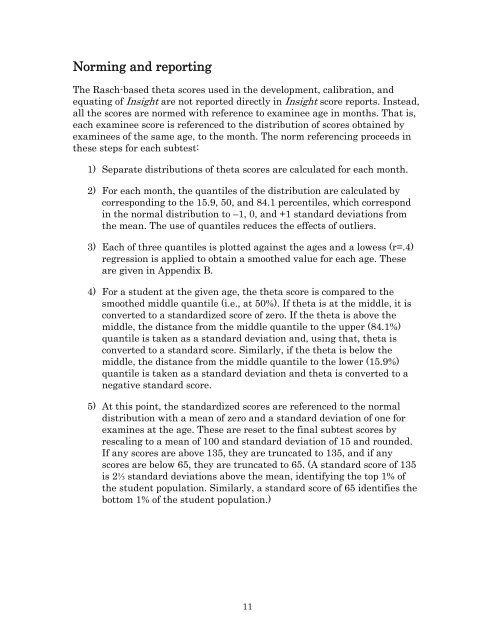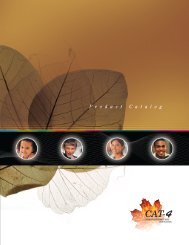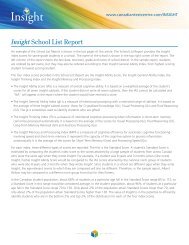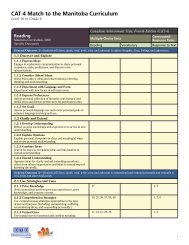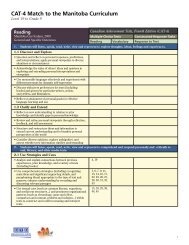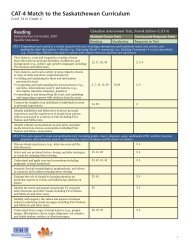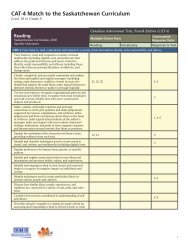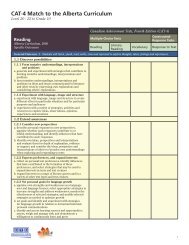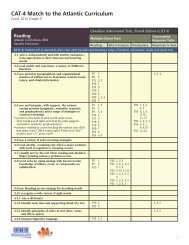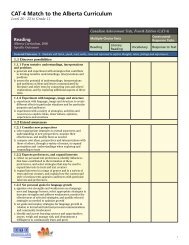Insight Psychometrics Technical Manual - Canadian Test Centre
Insight Psychometrics Technical Manual - Canadian Test Centre
Insight Psychometrics Technical Manual - Canadian Test Centre
You also want an ePaper? Increase the reach of your titles
YUMPU automatically turns print PDFs into web optimized ePapers that Google loves.
Norming and reportingThe Rasch-based theta scores used in the development, calibration, andequating of <strong>Insight</strong> are not reported directly in <strong>Insight</strong> score reports. Instead,all the scores are normed with reference to examinee age in months. That is,each examinee score is referenced to the distribution of scores obtained byexaminees of the same age, to the month. The norm referencing proceeds inthese steps for each subtest:1) Separate distributions of theta scores are calculated for each month.2) For each month, the quantiles of the distribution are calculated bycorresponding to the 15.9, 50, and 84.1 percentiles, which correspondin the normal distribution to –1, 0, and +1 standard deviations fromthe mean. The use of quantiles reduces the effects of outliers.3) Each of three quantiles is plotted against the ages and a lowess (r=.4)regression is applied to obtain a smoothed value for each age. Theseare given in Appendix B.4) For a student at the given age, the theta score is compared to thesmoothed middle quantile (i.e., at 50%). If theta is at the middle, it isconverted to a standardized score of zero. If the theta is above themiddle, the distance from the middle quantile to the upper (84.1%)quantile is taken as a standard deviation and, using that, theta isconverted to a standard score. Similarly, if the theta is below themiddle, the distance from the middle quantile to the lower (15.9%)quantile is taken as a standard deviation and theta is converted to anegative standard score.5) At this point, the standardized scores are referenced to the normaldistribution with a mean of zero and a standard deviation of one forexamines at the age. These are reset to the final subtest scores byrescaling to a mean of 100 and standard deviation of 15 and rounded.If any scores are above 135, they are truncated to 135, and if anyscores are below 65, they are truncated to 65. (A standard score of 135is 2⅓ standard deviations above the mean, identifying the top 1% ofthe student population. Similarly, a standard score of 65 identifies thebottom 1% of the student population.)11


